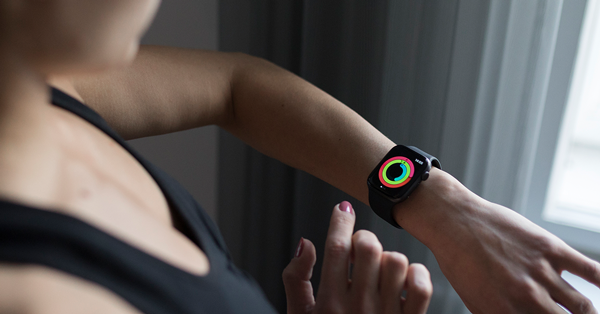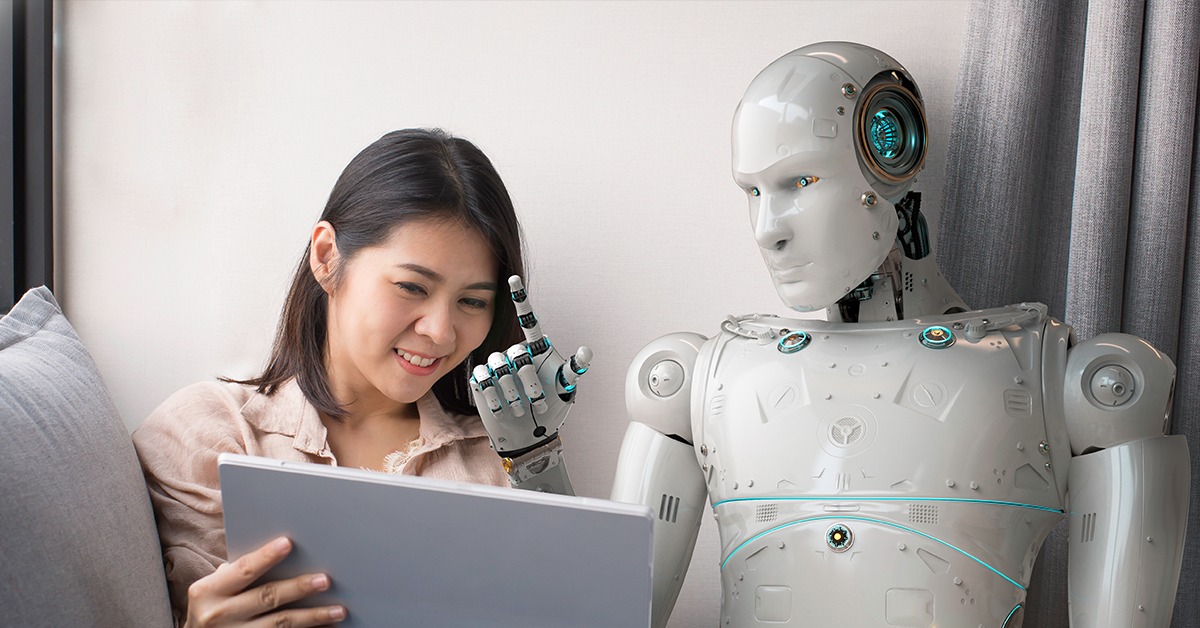
Imagine a world where our devices not only hear us but also talk back, where watches don't just show the time but also our heartbeats, and where robots are not just in movies. Today, the Internet of Things (IoT) has made an interesting collaboration of wearable gadgets and robots possible. This has become an important subject of discussion at IT conferences in the USA.
Gone are the days when wearables were limited to basic fitness trackers. Today, they integrate into our lifestyles, providing real-time insights into our health, habits, and even emotional states.
As we delve into this exciting topic, we will use insights from the Internet 2.0 Conference to explore how these technologies converge within the IoT ecosystem, examine their present-day applications, and think about the ethical questions that arise as they become increasingly present in our existence.
From Sci-Fi Dreams To Reality: A Brief History Of Wearables And Robotics
In the beginning, wearable devices were like big early versions, not the small and stylish ones we use now. The first wearable computer, called "The Mother of All Demos," was demonstrated by Douglas Engelbart in 1968. It was a basic version of today's smartwatches and AR glasses. In the 21st century, a big change is happening with wearables.
At first, robots were mainly used in factories to do the same things over and over. But things changed. Better sensors, smarter AI programs, and robots that can work together brought them into new areas, like healthcare, farming, and even human companions.
The Internet of Things (IoT) has brought wearables and robots together, allowing them to communicate and work together. This change isn't just about technology; it's also changing how we live. Experts at a tech conference in Dubai highlighted that wearables and robots are not just in stories – they're a big part of our lives now.
The IoT Ecosystem: Where Wearables And Robotics Converge
Upcoming tech events are showing great interest in IoT due to its potential in the future. Let's take a closer look at the IoT ecosystem and how it combines the worlds of wearables and robotics:
Interconnected Insights
The IoT enables wearables and robotics to share valuable data. Wearables collect personal health metrics, such as heart rate and sleep patterns, while robots gather information from their surroundings, like temperature and movement.
Data-Driven Adaptability
By analyzing the data, these devices can adapt to our preferences and needs. For instance, wearables can suggest optimal exercise routines based on our health stats, while robots can adjust their actions in response to changes in their environment.
Smart Home Synchronization
The IoT facilitates smart homes, where wearables and robots collaborate to create an intelligent living space. Wearables can notify robots to adjust lighting, temperature or even start dinner preparations based on your arrival.
Enhanced Healthcare
Wearables can transmit real-time health data to medical professionals, allowing remote monitoring. Robots, integrated with IoT, can assist healthcare workers by delivering supplies and even performing minor tasks.
Industrial Transformation
In industries, IoT-connected wearables provide insights into worker safety and efficiency, while robots collaborate on assembly lines, optimizing production processes.
Data Security Challenges
However, this convergence also brings challenges, primarily data security and privacy. The influx of sensitive personal and operational data requires strong security.
The world of smart devices, like wearable gadgets and robots, is changing. It's like going from single gadgets to a big group of devices that work together. As smart devices keep getting better, they have the power to change how industries work, make life better, and mix technology and human life in exciting ways.
Beyond Fitness Tracking To Personalized Lifestyle Companions

Wearable devices have become important friends that fit into our lives, doing more than just helping us stay fit, shared the IT experts at the Internet 2.0 Conference about the evolution of wearable devices.
Holistic Health Monitoring
New wearables don't only count steps. They also check our heart rate, sleep quality, stress, and even how much oxygen is in our blood. A research shared at IT conferences in the USA says that the global wearable medical device market is expected to grow at a compound annual growth rate (CAGR) of 25.7% from 2023 to 2030.
Smart Wardrobe
Wearable technology has ventured into the realm of fashion. From smart rings that track sleep patterns to smart glasses displaying notifications, wearables are becoming stylish extensions of our outfits.
Emotional Insights
Wearables are even delving into our emotional well-being. Devices can detect changes in skin conductance, indicating stress levels, and provide timely interventions.
Personalized Assistance
With AI integration, wearables offer tailored suggestions. They can recommend exercise routines, nutritional choices, and even remind you to stand up after prolonged sitting.
Medical Advancements
Wearables are aiding in medical diagnosis and treatment. Devices like ECG-enabled smartwatches can detect irregular heartbeats, potentially preventing heart conditions.
Independence For Seniors
Wearables provide safety nets for seniors. Features like fall detection and emergency alerts ensure timely assistance, fostering independent living.
Wearable devices are getting more varied, and they're not just gadgets anymore – they're important parts of our everyday lives. They collect info about our health, routines, and what we like. This helps us by giving us personalized tips and details about our daily lives. Going from just tracking fitness to being helpful in everyday routines shows how technology can adapt in various ways.
Robotic Assistants: Enhancing Daily Life Through IoT Integration

In our world of amazing technology, robots have gone beyond just being in sci-fi stories. They've become really important in our daily lives. They're not only doing tasks for us, but they're also making our lives better in new and exciting ways because they're connected to the internet. In the upcoming tech events, like the Internet 2.0 Conference scheduled in 2024, we'll learn more about where robots are headed. But for now, let's see how robots are changing our everyday lives by working together with smart IoT devices.
Collaborative Chores
Robots equipped with IoT sensors collaborate with smart devices to efficiently tackle household chores. From vacuuming floors to folding laundry, they free up our time for more meaningful activities.
Personalized Assistance
IoT-connected robots can adapt to our preferences and routines. They can adjust lighting, temperature, and even music based on our moods and schedules.
Healthcare And Well-Being
Robots extend their aid to healthcare. They can remind patients to take medication, assist individuals with limited mobility, and even conduct routine health check-ups.
Retail And Hospitality
In commercial spaces, robots enhance customer experiences. They provide information, guide visitors, and even deliver orders to hotel rooms, reducing wait times.
Agricultural Revolution
IoT-driven robots are revolutionizing agriculture. They can precisely plant seeds, monitor crop health, and even autonomously harvest, boosting efficiency and yield.
Manufacturing And Logistics
Robots integrated with IoT streamline industrial processes. They optimize production lines, monitor equipment health, and ensure timely deliveries in logistics.
Ethical Considerations
As robots become more embedded in our lives, ethical concerns arise, from job displacement to issues of privacy and data security.
From fantasies to realities, the fusion of robotics and IoT is changing how we navigate our world. Robotic assistants are integrated into our lives, enrich our existence and challenge us to navigate the evolving landscape of technology.
Ethical Considerations And Future Possibilities
As wearables, robotics, and the IoT reshapes our world, it's important to reflect on their ethical implications. Here's a glimpse into the ethical landscape and the limitless future possibilities that renowned IT conferences in the USA have shared over the years.
Privacy Predicaments
The constant data exchange between wearables, robots, and IoT devices prompts concerns about data privacy. How can we ensure that our personal information remains secure and isn't exploited?
Data Ownership Dilemmas
As wearables and robots collect intricate details of our lives, questions arise about who owns this data. Should users retain control, or do manufacturers hold the reins?
Job Displacement Debate
While robots enhance efficiency, there's the worry of job displacement. Balancing automation with employment opportunities becomes a critical consideration.
Technological Dependence
As wearables and robots become more integrated, are we becoming overly reliant on them? Striking a balance between human agency and technological assistance is essential.
Human-Machine Interaction
How do we ensure that our interactions with robots remain ethical and respectful? Establishing guidelines for human-robot relationships becomes crucial.
Accessibility And Equity
The adoption of wearables and robots might not be uniform across all demographics. Ensuring equal access and benefits for all requires attention.
Bright Horizons
Looking ahead, the fusion of wearables, robotics, and IoT offers exciting potential. From personalized healthcare solutions to eco-friendly agricultural practices, the possibilities are vast.
Exploring the moral aspects of wearable robots and the Internet of Things (IoT) world needs all of us to work together. As we move into a future full of potential, it's important to focus on making technology that's responsible. We should find a good balance between the good things technology brings while keeping our human values safe.
Internet 2.0 Conference In Promoting Growth In The Field Of Robotics
Wearable devices have changed a lot. They now help us with our daily lives, like counting our steps and understanding what we might need at the moment. As we stand on top of this technological revolution, upcoming tech events and platforms like Internet 2.0 Conference emerge as crucial arenas for change. At this highly anticipated tech conference in Dubai and Las Vegas, you can seize the opportunity to learn about trending advancements in tech and Internet, collaborate with successful IT professionals, and gain a competitive edge in the landscape.

